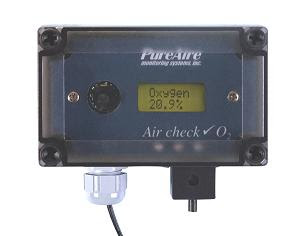Used in a range of
industries, nitrogen generators ensure a steady supply of 99.5% pure,
commercially sterile nitrogen from a compressed air storage tank. From an
industrial standpoint, nitrogen generators are seen as preferable to cylinders
of nitrogen as they are more reliable, more compact, and easy to use and
install. However, these generators are not without risk. Learn about nitrogen
generator installation best practices and how to stay safe when using these
devices in your facility.
Where are Nitrogen
Generators Installed?
Since nitrogen
generators have such a wide array of end use cases, they wind up getting
installed in different commercial environments. Nitrogen generators may exist
in:
- Brewing operations - To sparge and mix the
wort
- Food processing and packaging plants - In the food
packaging process
- Industry - To test and clean tanks and vessels
- Engineering facilities - For use in manufacturing,
testing, and product development
- Automotive plants - In paint booths
These generators offer
a steady supply of nitrogen at a lower cost than using gas cylinders. One
generator takes up less room than several cylinders, saving floor space where
it is needed most. A generator is easy to install and simpler for employees
to use (since it requires less maintenance) than cylinders, so many
manufacturers have switched from using cylinders of nitrogen to using
generators.
Nitrogen generators
are most often operated indoors, as these typical use cases show. In the event
of a leak or other problem with the generator, escaping gas has nowhere to go
other than inside the building. In some cases, the building may be set up so
that nitrogen generators vent to the outside, thus offering a buffer from the
harmful gas; however, it is not always possible to vent the generator to plain
air.
That said, these units
do post a risk. Nitrogen is a colorless, odorless gas that creates an oxygen
deficient state. If the generator were to develop a leak, nitrogen gas could
leak out undetected into the work environment. In a matter of minutes, nitrogen
gas from a leaking tank can deplete the workspace of oxygen. To protect the
health of your employees, it is necessary to only use nitrogen generators in
conjunction with an oxygen monitor, which alerts staff to low levels of
oxygen.
Why You Need an Oxygen
Monitor With Nitrogen Generators
An O2 monitor,
or oxygen monitor, continually monitors the level of oxygen in the room. When
there is enough oxygen, the detector stays silent. A normal oxygen value is 21
percent by volume. If something unexpected happens -- such as a nitrogen
leak -- and the amount of oxygen in the room begins to fall, the monitor sounds
an alarm and flashes to grab staff attention. This way, staff have advance
knowledge and can leave the work space before oxygen levels fall too low.
Oxygen monitors can
alert staff if levels fall too low (19.5 percent or less) or too high (23.5
percent or above). Low levels of oxygen pose a severe health hazard
for individuals, while high levels of oxygen pose a fire and combustion
hazard.
Without an O2 monitor
in place, staff would have no knowledge of a nitrogen problem until it was too
late. When oxygen levels fall below the acceptable threshold, staff can become
disoriented and fatigued, while succumbing to a euphoria that can dissuade them
from noticing that something has gone wrong. Loss of coordination and mental
processing skills, followed by poor judgment, vomiting, nausea, and eventually
death by asphyxiation as oxygen levels continue to fall.
An additional
consideration for large facilities is that nitrogen gas is often used far from
the actual location of the generator. Thus, even if the generator you have
purchased comes with an O2 monitor of its own, the monitor may not be able to
test working conditions where the nitrogen is actually in use. A facility may
need multiple oxygen monitors to make sure that all areas where nitrogen gas is
used have acceptable air quality.
PureAire offers O2
monitors that work in conjunction with nitrogen generators. PureAire's line of
oxygen detectors rely on zirconium sensors, which are guaranteed to work for at
least 10 years without calibration. When it comes to protecting your staff,
it's the wise choice. Explore PureAire's lineup of oxygen detectors at
http://www.pureairemonitoring.com.

